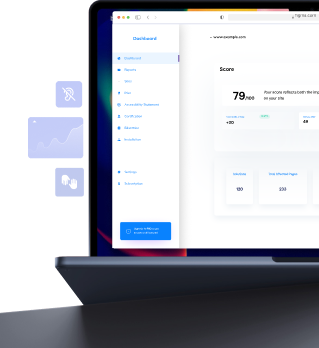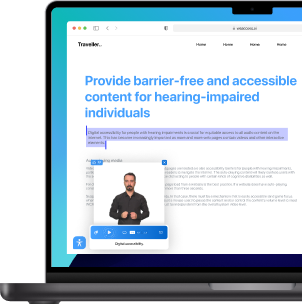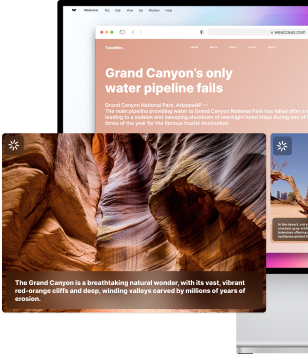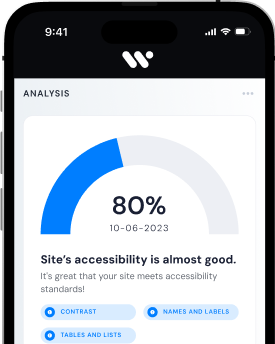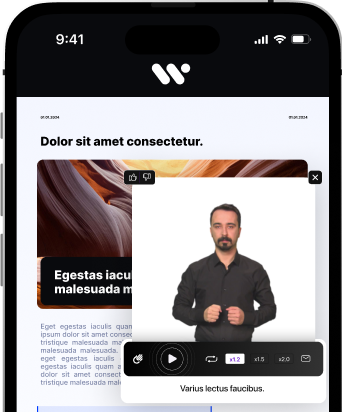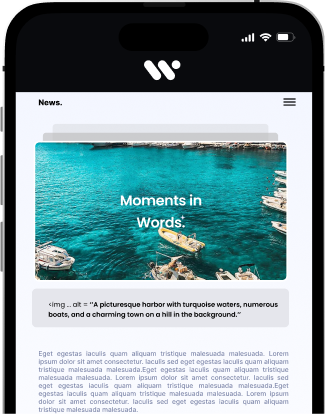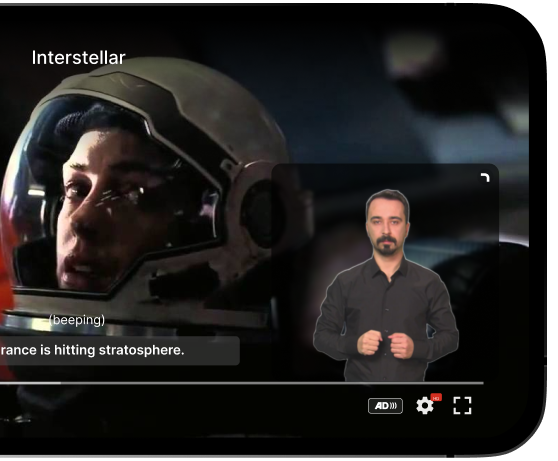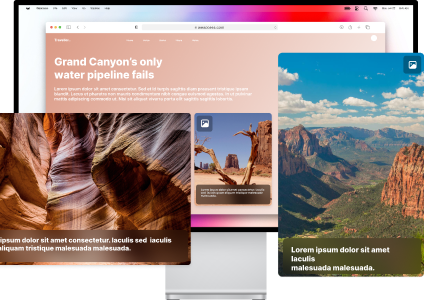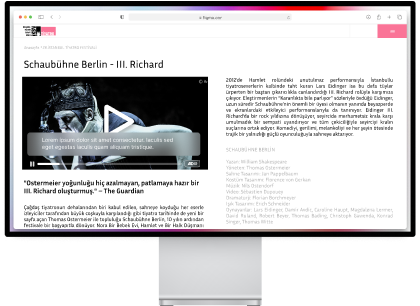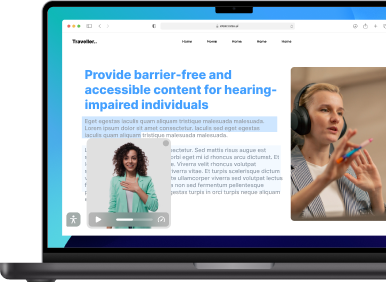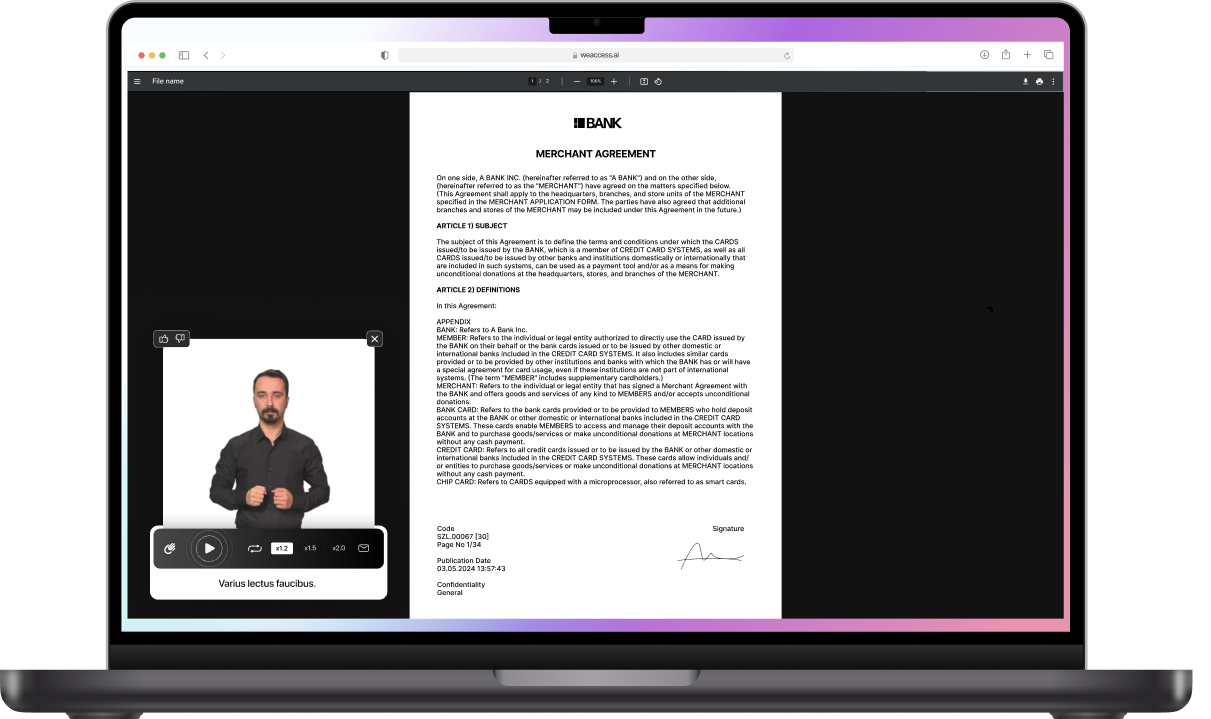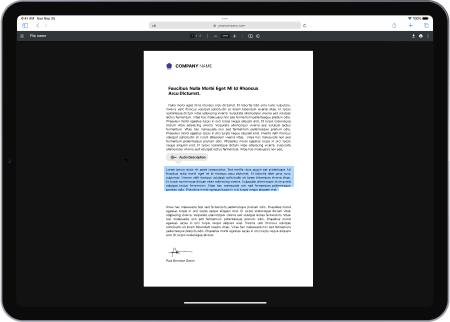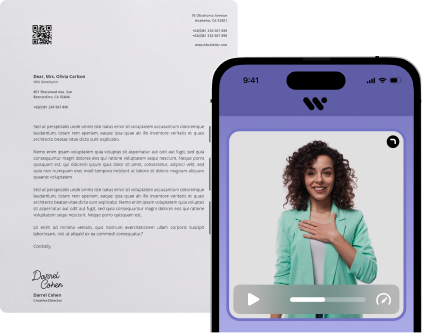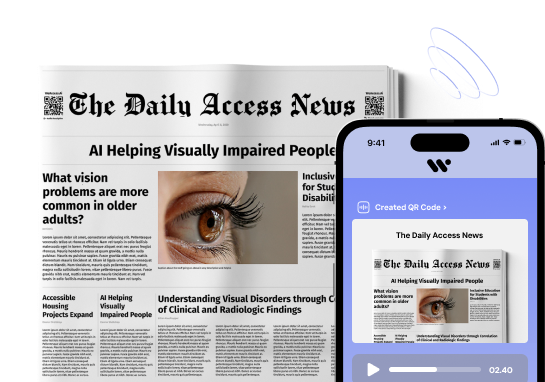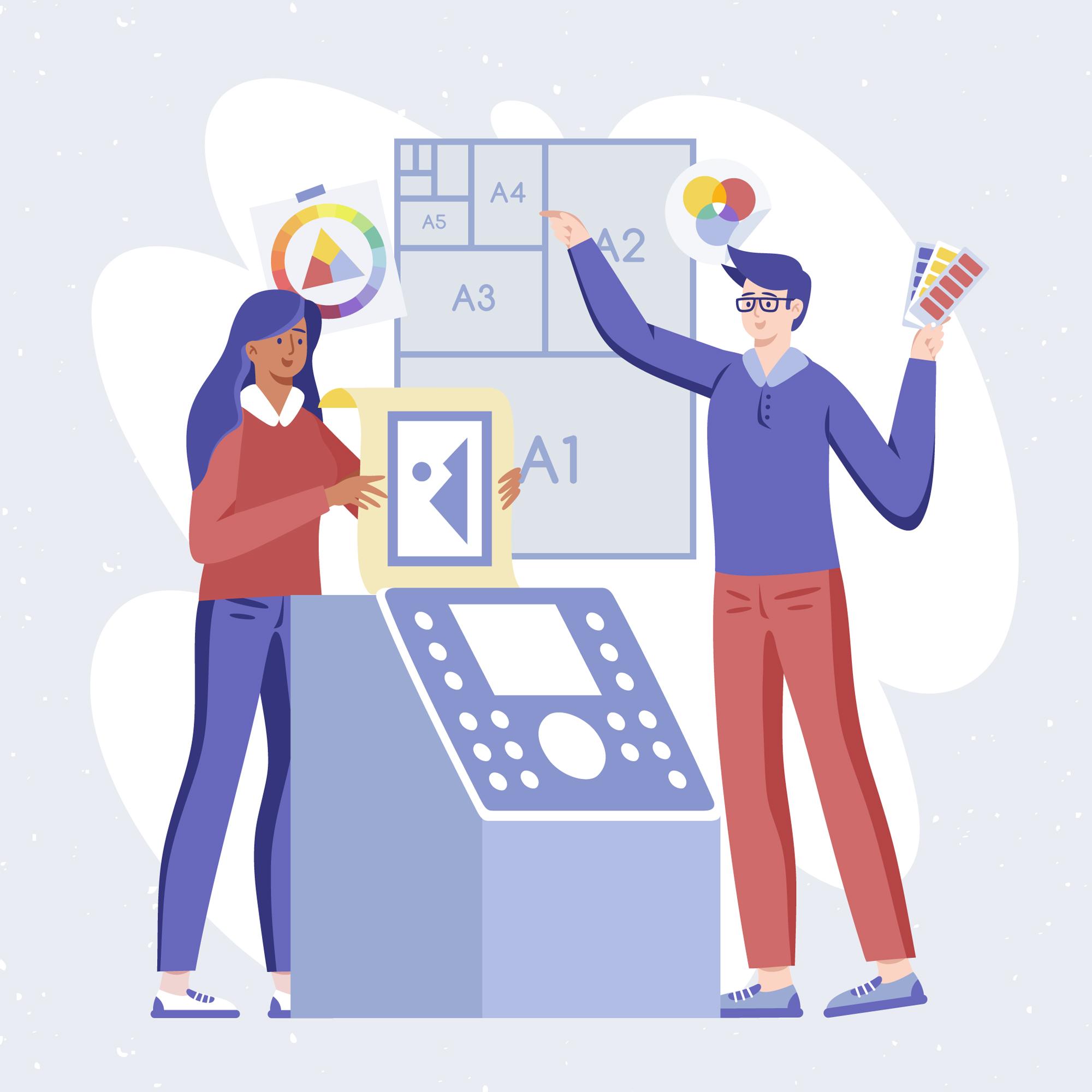Accessibility in Design and Thinking Process
Exploring Inclusive and Barrier-Free Approaches
Today, there are many problems waiting for a solution, whether we are aware of them or not. In addition, we also see those who want to tackle a problem that already has a solution with a different approach. Let's not forget the ideas that emerge with the aim of being "better than the existing ones". At the end of the day, all of these can turn from an idea into an application with the perspectives of people with a brave and entrepreneurial spirit.
It is really exciting to tackle a problem with new methods and produce a solution. But today, how many startups are solving a problem by addressing accessibility? Or how many startups think about how that problem can be solved for a person with visual or hearing impairment?
Although it is possible to answer all of these questions, it is possible to combine all of these questions into a single question: for how many startups do entrepreneurs make accessibility a part of their development process at the idea stage? In this article, we are going to talk about integrating accessibility into the design and thought process, which is exactly what this article is about. We will look at the design thinking process, at which stage of this process accessibility should be considered and much more.
As always, for those who are new to the concepts of accessibility and digital accessibility, it is important to briefly introduce them. You can access our articles detailing these concepts on our WeAccess.Ai blog page. Next, we will continue our article by introducing design thinking.
The Concept and Importance of Accessibility
In short, we can define accessibility as the design of everything you can think of, whether physical or digital, in a way that can be used by everyone, including people with disabilities. In this context, for example, we can give the example of a visually impaired person walking around a building with a white cane or a guideway, or a visually impaired person in the digital environment having a smooth experience with screen reader software on websites and mobile applications.
Accessibility is of great importance for the protection of the right of disabled people to access information, to live in the same conditions as other members of society and for many other reasons. For this reason, institutions and organizations should carry out inclusion-based work in both the physical and digital spheres.
The Role of Design and Thinking Process
The design and thinking process briefly encompasses the process of coming up with an idea, designing it and presenting it to people. Ideas arise from identifying a need or taking a different approach to an existing type of initiative. They then work on transforming this idea into a tangible product. In design thinking, each stage in the development of an idea is handled and planned like a designer.
Stages of Design and Thinking Process
Design thinking is crucial for the emergence of creative ideas. Harnessing the power of design helps entrepreneurs or idea owners to think differently, no matter what problem they set out to solve.
The starting point of design thinking is to concentrate on the solution and look for different ways to solve it. Although there are different approaches to this understanding, Stanford University's Hasso-Plattner Design Institute, also known as the d.school, has put forward a 5-stage design thinking model and this model is widely known. Let's get to know these 5 basic elements briefly.
- Empathizing: It is the process of thinking like the users who are intended to use the product or service to be developed and analyzing what they want correctly.
- Definition: It is the correct definition of what needs an idea will meet and what problems it will be developed to solve. The definition to be made is very important in order to bring the right solutions to the problem or problems.
- Designing: This is the first stage where the solution process for the identified problem or problems is partially addressed. The idea is identified and assumptions are made for this idea that will create innovative solutions. These assumptions are then worked on.
- Prototyping: The process of solving the identified problems starts at this stage. In order to determine the right solution methods, the data obtained in the previous stages (identified problems, needs, etc.) are analyzed and ways to solve the problems are sought. Solution methods are determined.
- Testing: In the final stage of the design thinking process, the proposed solutions are tested to see how feasible they are.
The Role of Accessibility in Different Design Thinking Processes
After recognizing the design thinking process, one will naturally wonder at which stages accessibility should be addressed. Here, first and foremost, entrepreneurs thinking about consumers with disabilities at the empathizing stage contributes greatly to their understanding of the accessibility process.
In the design process, how the idea of the subject should be transformed for people with disabilities is discussed. At this stage, design methods that will contribute to increasing the accessible experience are considered.
The final stage is the prototype stage, because this is the first time it will be seen concretely how well the solutions work.
Advantages of Accessibility-Oriented Design
Advantages of Accessibility-Oriented Design When startups pay attention to accessibility in their design processes, they gain many advantages. First and foremost, people with disabilities can use their websites or mobile apps without any problems, which reflects positively on their statistics.
On the other hand, by permanently incorporating accessibility into the business plan, it will never be an issue and you will receive less negative feedback from your disabled customers.
If you communicate to the public that you offer an accessible experience in the right way, you will attract the attention of everyone with and without disabilities who care about this issue and gain new customers/visitors. But most importantly, you contribute to the protection of the right to access information for people with disabilities by making decisions based on inclusion. You can read our other blog posts to learn more about the importance of accessibility and the advantages of design approaches based on it.
Accessibility Strategies and Design Principles
Recognizing brands that care about accessibility, knowing their design principles and their relationship with accessibility can motivate you to offer a more accessible experience. We will briefly discuss these in this topic.
Basic Principles of User-Centered Design
There are some principles of user-centered design. Some of these principles are also related to accessibility. Let's take a look at them.
- Usability principle: The ability of an application or website design to be used comfortably by everyone. This process also includes accessibility conditions for people with disabilities. It is against this principle for a visually impaired individual to have problems accessing any section of a website with screen reader software.
- Usability principle: Refers to arrangements made to make an application or website even easier to use. Each needed component is positioned in such a way that it is easy to find on the relevant website or mobile application. In addition, creating shortcuts to frequently used items can also be considered in this context. Accessibility efforts (e.g. support for keyboard shortcuts, shortcuts for accessing certain sections with a screen reader, etc.) can also be considered within the framework of this principle.
- The principle of demand: This principle is based on whether the design meets user expectations. A website you have designed may be very useful and accessible, but users may have different expectations. This principle refers to organizing the design to meet user expectations.
- The principle of being easy to find: This refers to the ease with which people can find your brand. Accessibility principle: It means that the content on your website or mobile app should be easily accessible to everyone. This principle also takes into account the needs of people with disabilities, so when we talk about accessibility, today we often discuss whether a website or app is designed for people with disabilities.
- Credibility Ensuring visitors' trust in your brand with all the principles you apply Accessibility with Technology and Tools
- Thanks to developing technology, accessibility has become an easier process, although it is limited to the digital field. At WeAccess.Ai, we are driven to deliver more than what's available today, developing digital accessibility solutions that leverage the power of artificial intelligence. Thanks to our solutions, you can open the doors to an accessible experience for your websites, images and even YouTube videos.
- WeAnalyse: It is our service that detects accessibility problems on websites and provides you with a detailed report. Moreover, your first page analysis is free.
- WeTool: It is a plugin that solves accessibility problems on your website with the help of artificial intelligence.
- By integrating WeTool into your website, you can make accessibility issues a non-issue. Moreover, WeTool regularly scans your website and instantly finds and solves problems. You can configure WeTool in any way you want.
- WePhoto: WePhoto allows you to automatically add alternative text to the images on your website. This way, visually impaired visitors can easily learn what is in the images on your website.
- WeSign: Our AI-based solution that allows you to translate sentences on your website into sign language. WeVideo: Allows you to create detailed audio descriptions for YouTube videos. And if you don't like it, you can ask for more detailed descriptions via chat.
Integrating Accessibility into Design and Thinking
We've already talked about integrating accessibility into the design and thinking process above. However, the accessibility process has its own different stages and in addition, there are points that will make your brand stand out. Let's look at these briefly.
Raising Awareness on Accessibility
Today, unfortunately, there are still very few startups that think that people with disabilities should have access to the services they offer. This can cause some initiatives that will make our lives easier to fail to make any contribution to their lives because they do not include people with disabilities. For this reason, entrepreneurs who care about accessibility at the idea stage have a tremendous advantage over their competitors.
These studies on the subject contribute greatly to raising awareness around accessibility and making other initiatives or companies care about accessibility. If you want to be a pioneer in raising awareness on this issue, you can include the accessibility process in the business plan.
Designing Barrier-Free User Experience
An important issue is how to design a barrier-free user experience on a website or app. In order to work in this direction, initiatives or companies need to first identify needs and collect feedback from users with disabilities. In short, inclusive experience includes
Is there a choice of color contrast and font size options suitable for a person with low vision?
Can a website for people with zero vision provide an experience that is fully compatible with mobile and desktop screen readers?
Do the videos on the website include a sign language option for hearing impaired individuals?
Application and web designers should fundamentally seek answers to these questions about accessibility.
Process of Solving Accessibility Problems
In order to resolve accessibility issues on a website or app, the issues should first be identified in detail. If you are not familiar with accessibility and want to get information about the problems, you can reach out to users with disabilities and ask them to review your website or mobile app and give you information about the problems.
After this process, you need to work with software developers and web designers who are knowledgeable about these issues to solve the problems on the software side.
Accessibility Tests and Feedback
Once you have solved the problems, it is very important to run tests to make sure everything is implemented correctly. Your own testing in this process will have limited impact for real use cases. For this reason, again, it will be useful to seek feedback from users with disabilities on accessibility.
With the feedback, you can solve other accessibility issues, if any, and ensure a truly inclusive experience for everyone. But remember that feedback is always valuable. In other words, listening to feedback from users in future processes will help you make great progress in both accessibility and other issues.
Problems and Solutions in Making Accessibility Part of the Workflow
While it may seem easy to provide an accessible experience in the digital world, there are some problems that you may encounter in this regard, as in everything else. Of course, there are solutions to these problems, just as there are solutions to everything, and if you aim to provide an end-to-end accessible experience across all your platforms, it is useful to know them.
It doesn't matter if your startup is in the idea stage or in the process of turning into a tangible product, you somehow wanted to incorporate accessibility into your workflow and started working on it. The first challenge you may face when sharing this with your team is that there may be some members of your team who are not familiar with this topic or are not fully aware of its importance. But this problem is not very difficult to solve.
All you need to do is to explain the importance and necessity of this issue to your business team with concrete examples and convince them. After this process, we are sure that your teammates will want to provide an end-to-end accessible experience in the project they are developing. But at this point, a second challenge may arise, but how? The teams developing and designing the app or website may not be familiar with accessibility, which is natural.
That's because most training programs for software and design don't cover accessibility. But it's not hard for your employees or teammates to recognize accessibility.
Similarly, you may not know about it either. All you need to do is ask someone who is qualified to train you. Once you grasp the technical side of the job, the rest is easy.
You may be wondering how well your work is working in the accessibility process of startups. If you are not familiar with accessibility technologies, it will of course be difficult to find out how well your work works in real-life situations. For this, reach out to the disabled people who will use the software or website in question and ask for their feedback.
One of the biggest challenges in the accessibility process is informing employees. When users notice an accessibility problem in the software or website you have developed and share it with you, if a person who is not knowledgeable about this issue gives them an irrelevant answer, it makes it difficult to solve these problems. The way to avoid this situation is, of course, to provide trainings to increase the awareness of employees.
Another important issue is sustainability in accessibility. In today's conditions, the process of ensuring sustainability in accessibility, which is usually quite difficult depending on the impact of rapidly developing technology and how much importance companies attach to accessibility, can be easily solved with the policies to be implemented on the subject. The best way to do this is to establish a dynamic business team that follows developments in accessibility and ensures that you implement them.
What will happen to accessibility in the future?
The development of technology, the emergence of new product groups or design trends, and many other factors can cause existing accessibility practices or accessibility criteria to fall behind. Therefore, accessibility needs to evolve in tandem with technology.
Even though we see rapid action being taken on accessibility in many areas today, some developments can cause controversy in setting standards. On the other hand, the positive side of the issue is that developing technology can enable different approaches to accessibility.
With the power of technology and artificial intelligence, it is becoming easier and easier to do everything today. It is of great importance that these conveniences are also valid for brands when implementing the digital accessibility process. In particular, artificial intelligence-based services can touch the lives of visually and hearing impaired individuals today.
For example, visual recognition technologies for the visually impaired allow a blind person to get detailed information about a photo sent to them without the need for anyone's support.
When all these situations are evaluated, we see that, if the applications are correct, it is a dominant fact that technological developments often have a positive impact on accessibility.
In the future, accessibility will no longer be a waste of time for companies and will become easily applicable. Emerging AI-based automation technologies will enable companies to quickly understand how there are issues around an inclusive experience and solve them without the need for third-party support.
In short, the technology that has evolved and continues to evolve will make a significant contribution to increasing accessibility practices and implementing more sustainable accessibility policies in the future.
Conclusion
Implementing accessibility may become easier in the future. However, it is important that institutions and organizations understand how important accessibility is for people with visual, hearing and other disabilities. Therefore, first and foremost, we invite all local and international companies to be more aware of accessibility. By transferring this awareness to their employees, it may be possible to raise awareness on accessibility on a global scale.
Then, of course, we expect all institutions and organizations to do the necessary work for an inclusive experience. We believe that providing an inclusive experience, in other words, making accessibility-centered plans, is not difficult at all. We hope that in the future, everything will be more accessible.
You may be interested : 5 Common Accessibility Mistakes

